Process Design Overview
A Process is just a series of Steps

Consider a hiring process, where you advertise a position.
Candidates contact you, and an assistant captures them in the first step on the left labelled “Candidates“.
The second step would be then to consider their CV’s (resumés), and take those that pass that step, invite them for an initial interview.
The ones that pass the first interview, may then be invited back for a second interview that perhaps includes a broader set of people in the interview making the evaluation about who to hire.
Finally, offers are made to the selected candidates, and those that accept the offers, are hired.
All Processes must have exactly 1 starting step, and 1 or more end-steps
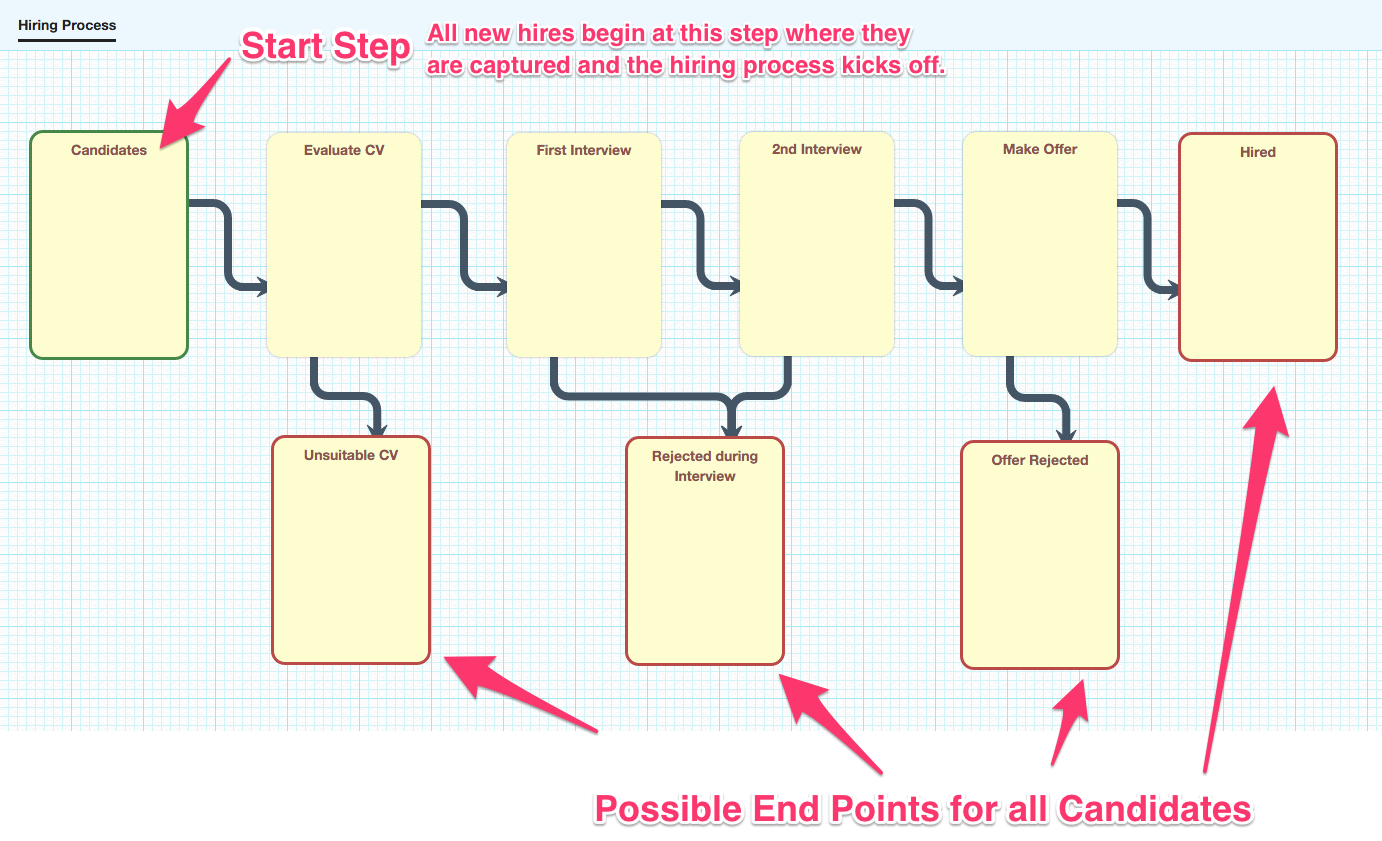
Rules of process design
- A process must have one and exactly one start step
- A process must have at least one end step
- A process may have as many end steps as you need
Cards are the entities that flow through your process
A card can be used to represent any entity or activity or task, that you wish to track through any process that you define.
In this example, a card is created for each new applicant that applies to our advertised job opening.
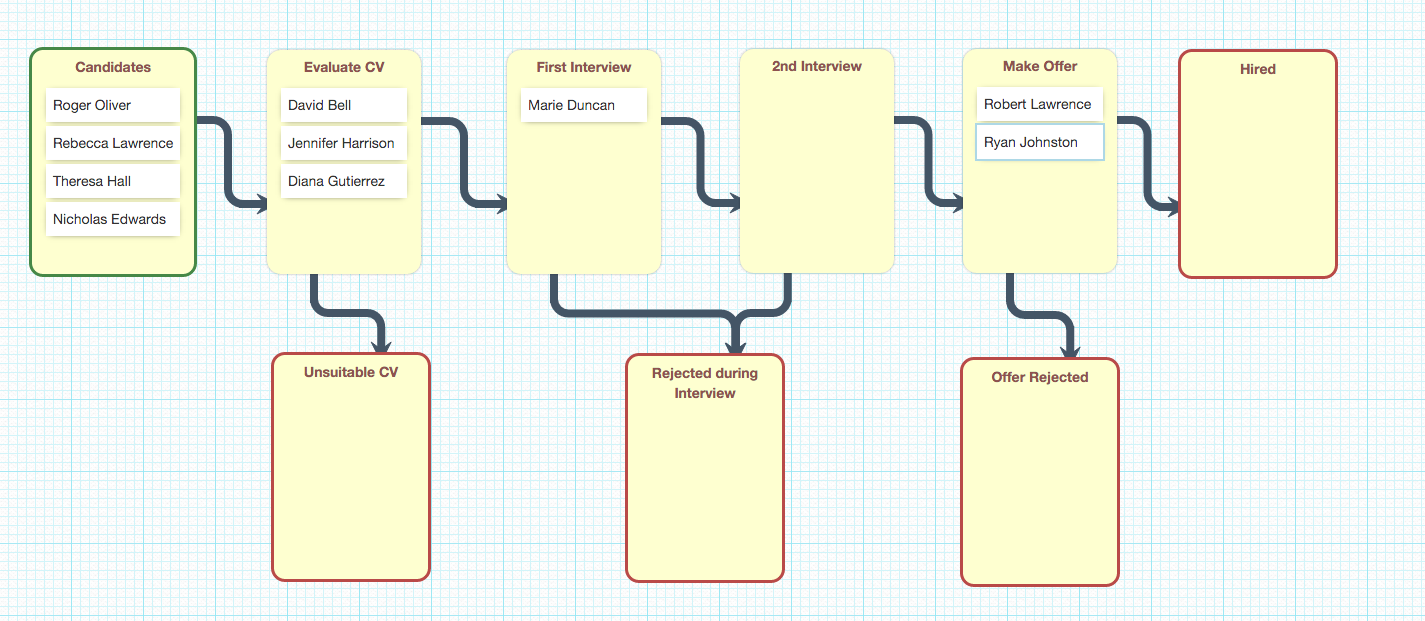
At a glance you can see a good overview of all the candidates that have applied and where they are in the process.
Choose which fields to capture per card
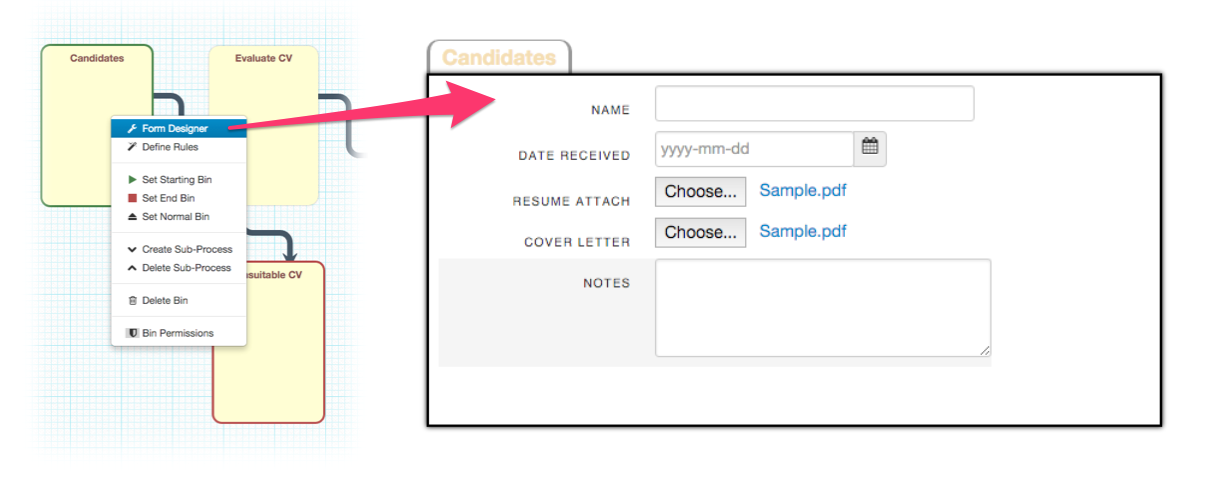
The most important fields for every card, should be defined on the start step, so that all cards of a specific process will have these fields. You do this by right-clicking the start step, and selecting the Form Designer.
In the same way, you can define fields for other steps, that must be captured at that step.
See also: Form Designer Manual page
Decide which field to display on the front of your cards
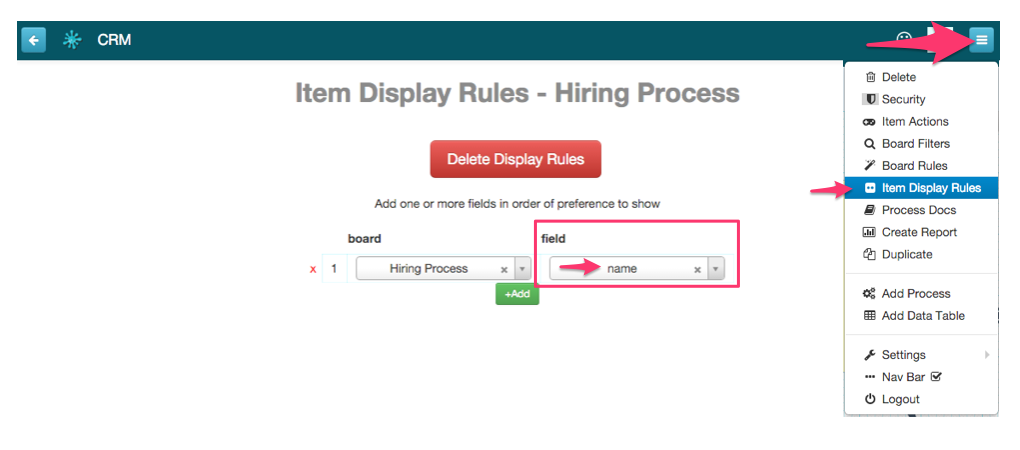
See also: Use formula fields to display multiple fields on the front of a card
Processes can also contain non-linear steps
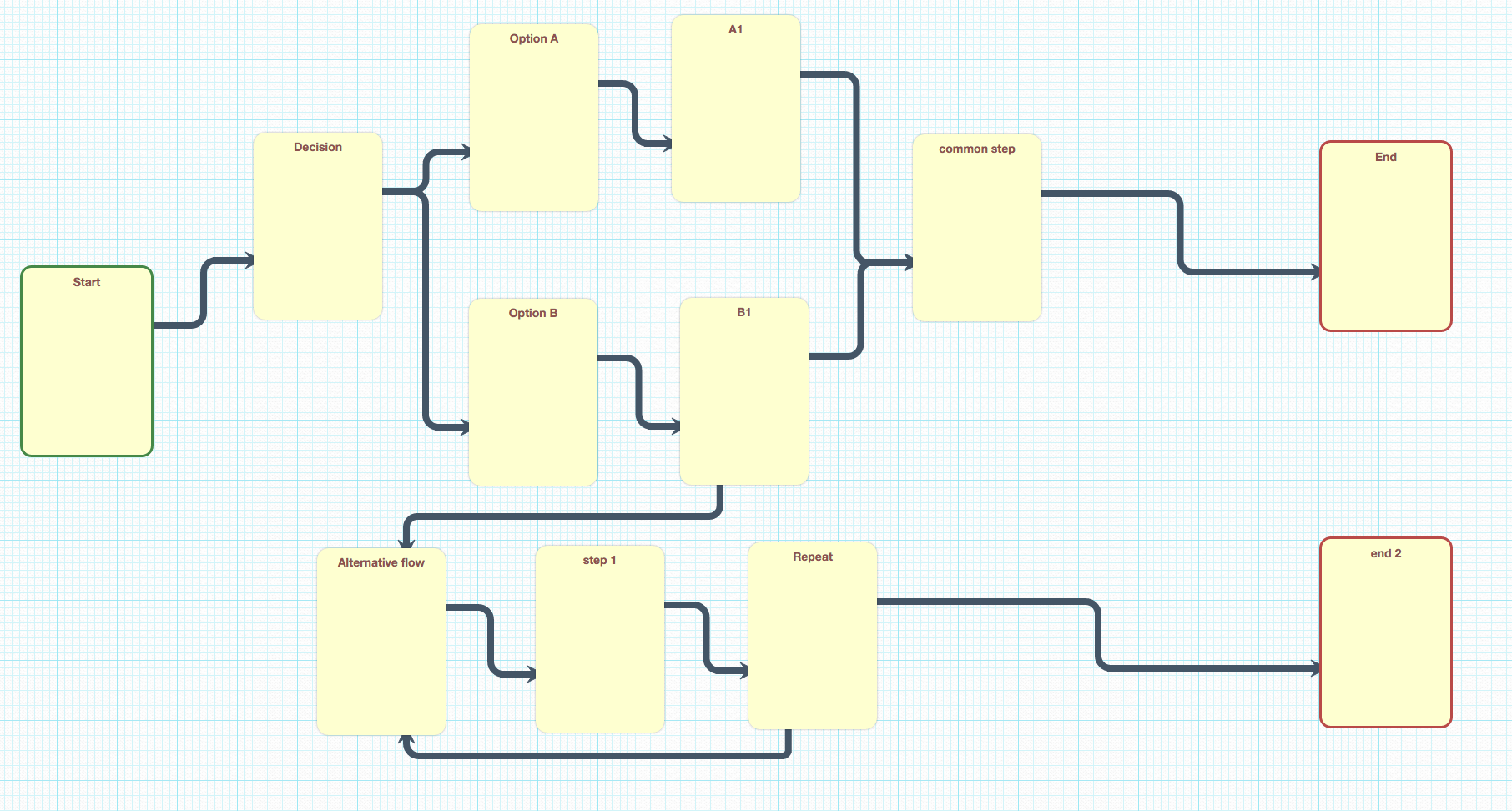
Complex process flows can include
- Decision Paths
- Rules that decide which steps should be done next
- Repeating steps and cycles
- Sub-steps by setting the step up with a Sub-Process to break a step up into a new board with more detailed sub-actions.
- Parallel execution – steps that work on the same card simultaneously
- Cards can jump from one board, to other boards, for further processing.
